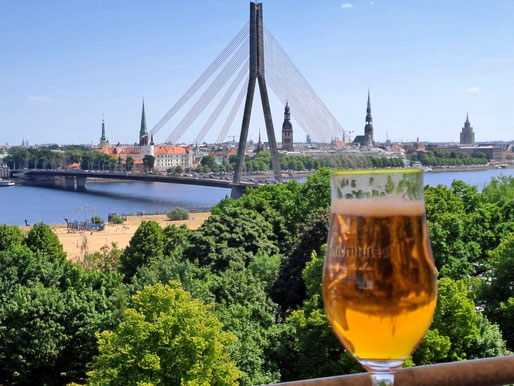Slaking a City's Thirst

At the entrance to Riga's historic Aldaris brewery, a magnificent king welcomes visitors with a foaming stein of beer. This eloquently symbolizes beer's position as top dog of Latvian drinks since time immemorial.
Over the centuries, the amber nectar has soothed dry throats after a day's hard work and at all sorts of celebrations. It has been been refined by interaction with other cultures, and used as a weapon in power struggles.
And it has even been used to communicate with the Almighty. So as you wet your whistle at the Midsummer celebrations, you are enjoying a delicious drop of history.
Elixir of the gods

Even before the dawn of agriculture, humans knew that naturally fermenting liquids could give them a buzz. Then, about 6,000 years ago, the Egyptians and Mesopotamians started to put their cultivated grains to use by making beer.
The skill and the pleasure travelled north through Europe via the Celts. And we know that Latvians were enjoying the stuff before recorded history.
Historian Linda Dumpe's provides some fascinating insights in her book Beer Traditions in Latvia (whose cover image shows an ale-fuelled peasant wedding in Vidzeme). For example, according to The Chronical of Henry of Livonia, when German missionaries suggested to the Livs they should convert to Christianity, the natives downed some mead before telling the interlopers to beat it.

Beer played a vital role in pagan rites long after churches and castles dotted the land. In 1610, Jesuit priest Dionysius Fabricius described a rural ritual during a drought. After sacrificing a black calf, a black ram and a rooster, the worshippers poured beer onto a fire to beg Pērkons, the God Thunder, for rain.
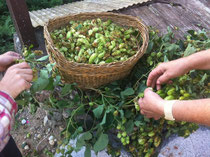
By the that time, much of Latvia's primeval forest had been cleared for farmland. This led to the demise of wild beehives which had been used for mead, which meant that most beer was made from grains. But by adding honey to the mix, Latvians produced miestiņš, a drink renowned for its strength and sweetness far beyond the Baltic shores.
Cultural exchange
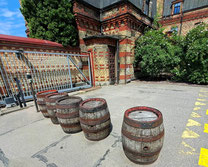
As soon as they arrived in Livonia, German monks also started brewing beer. And their innovations were eagerly adopted by the locals.
For example, whereas the ancient Balts had kept their beer in open containers - necessitating immediate consumption - barrels meant the stuff could be stored and transported. Hops grows wild in Latvia and have been used since antiquity to flavour beer. But cultivation of the crop meant it could be systematically added for extra strength and longer life.
This greatly increased beer's commercial value. And fostered greed. In 1649, a law was adopted making it illegal for anyone except landed estates to sell beer. However, the peasants were still allowed to brew it for their own consumption. This privilege was not granted in many other parts of Europe, meaning that Latvian folk brewing traditions lasted much longer.
Moreover, according to Dumpe, most of the brewers hired by the barons to produce their profitable pints were Latvians. And Latvian publicans were allowed to run taverns, so long as they only sold product from the manor. So there wasn't much crying into the beer, at least by the publicans.
A golden feast

Urban denizens were no slouches in when it came to living it up, either.
By the 16th century, there were dozens of taverns in Riga. But the biggest party was an intoxicating blend of beer and religion.
In medieval northern European cities, the biggest carnival of the year was held in the week before Lent. In Livonia, it was called Vastlāvji, derived from the German "Die Fastnacht," or the night before fasting.
The church intended it to be a stress reliever before the hard spiritual work of reflecting on one's sins before Easter. And jollity ran wild, as folks took to the chilly late winter streets, wearing animal masks, carrying colourful banners and dancing in the torchlight. The unmarried foreign merchants of the Order of Blackheads jousted in tournaments on the sand dunes where the Academy of Art now stands.

Elaborate feasts were held in the House of Blackheads and the guild halls. During the festivities, the craftsmen gathered in the Small Guild typically consumed an entire ox and 22 barrels of beer. On the final evening, the elder of the guild hall would give orders for all the remaining beer to be drunk by dawn, on pain of hefty fines if any was left:
"There is plenty here for all. And there will be plenty for all. Now, I forbid you to leave until all the beer has been drunk."
Lent wasn't the only excuse for a proper booze up. The 16th century Livonian chronicler Balthasar Russow noted that during weddings, the floors of the guild halls were so wet from spilled beer that straw had to be laid down so people could walk and dance.
Pagans forever
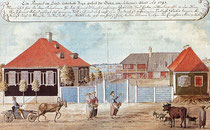
Then, in a marvellous way, town and country celebrations merged into one.
For a long time, at midsummer, Latvians in Riga had held a fair offering grasses and herbs for solstice rituals. But after a devastating siege by Peter the Great in 1709, plague and poverty put a damper on these traditions, as folks struggled just to survive.
Latvia's trees came to the rescue. In the 18th century, the remarkably tall and straight Baltic pines were in high demand for ship masts around the world. A Latvian member of the Brotherhood of Mast Sorters named Jānis Šteinhauers became Riga's wealthiest man.

In 1759, Šteinhauers began hosting Līgo revellers at his manor in Pārdaugava, located where the University of Latvia Botanical Gardens are today.
Within a few years, the custom had spread across all classes and nationalities in Riga. Bonfires were lit along the Daugava and residents took to the water in boats garlanded with flowers. In 1790, in the days leading up to midsummer, the herb market reopened on the riverbank. This continued until the Soviet occupation in 1940, and it was revived once more after Latvia regained its independence.
And naturally, beer was imbibed with relish throughout these events.

Of course, everything in life changes, even beer drinking habits. In the late 17th century, those rapacious barons started distilling and selling vodka, giving a harder edge to parties ever since. And in the late 19th century, industrial breweries sprang up like mushrooms after rain.
But Latvians never lost their thirst for beer. Or their skill in brewing it. And you can appreciate this today by sampling wonderful craft beers in fun bars all over Riga.
Below is a rundown of five of the very best pubs in Riga. See the map at the bottom for the addresses and opening hours.
Top five Riga beer bars
1. my beer salon

Fed up with electric scooters and selfie-snappers? Then take a stroll to the eastern side of Old Riga, a haven of cobblestone lanes and Hanseatic houses so quiet you'd think it was winter during the Covid years all over again.
Happily, despite the tranquillity, you'll still find the amenities of civilisation here. Like My Beer, the biggest beer salon in the Baltic States. It's located in a 17th century warehouse, with the most chilled pavement seating around. From whence you can make your way through 600 or so brews.
Don't miss Rīgas alus, a beer created in Latvia after the war, drunk by Stalin, lost in a messy privatisation, then recreated from the original recipe. A story worthy of a movie - and where better to write the screenplay than here, cradling a cold one on a fine afternoon?
2. vinilbārs

South of the river, Āgenskalns is that rare neighbourhood where freshly painted gentrification and salty local grit manage to serenely coexist.
To savour both worlds, park yourself at Vinilbārs. The welcoming bartenders spin records and unleash craft beers, which can be sipped on the spacious terrace overlooking a tyre change garage.
It's thirsty work watching the guys lumber the rubber, but a Kontakts by Jūrmala's Prusaks brewers hits the spot. But better not if you're waiting for your car to be done.
They also do yummy burgers straight off the grill Wednesday and Thursday evenings.
3. zobens un lemess
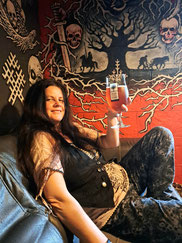
A century ago, three breweries busily chugged away near Briāna iela on the northern fringes of the city centre. Today, their handsome old brick quarters have been colonised by a bunch of beery enterprises catering to a variety of livers, comprising the Riga Beer District.
If your tastes run to Pagan metal, grubby grunge furnishings and a stack of delicious local craft beverages, Zobens un Lemess (“Swords and Ploughshares”) is the promised land. The wheat beer with cherries and raspberries, concocted by the folks at Viedi brewery on the way to Sigulda, is heaven in a glass on a dog day evening.
Also, show off your leather and tats at the venue's out-of-town festivals.
4. walters & grapa

A short walk from Zobens un Lemess, Walters & Grapa offers a little less bass and more treble. Rub shoulders with artists and assorted bohemians in an interior inspired by puppet theatre decorations, and dance till dawn to tunes spun by Riga's hottest DJs.
In summer the action moves to benches sprawled along Miera iela, tastefully done out in the same red and black garb as inside. Sample the wares made by small Latvian and Lithuanian breweries. The lager from Smuku muiža in Kurzeme goes down a treat.
5. Trīs vīri laivā

Only a few years ago, Avotu iela was a working class hood so rough local girls carried "half a brick - the colour of your eyes" in their handbags to quash any nonsense at parties.
Clearly, the threat level has diminished, as a slew of hipstery alehouses now help the dog grooming parlours and casting agencies to raise the vibe (and rents). But on your way to cool joints like Krokodīls and Trofeja, don't just walk past Three Men in a Boat, a simple but friendly watering hole that has been pulling pints since the nineties. And barely raised its prices. A house lager for 3.50 and a bowl of nuts for 0.50? Another, please! The ķiploku grauzdiņi are scrumptious, too.

